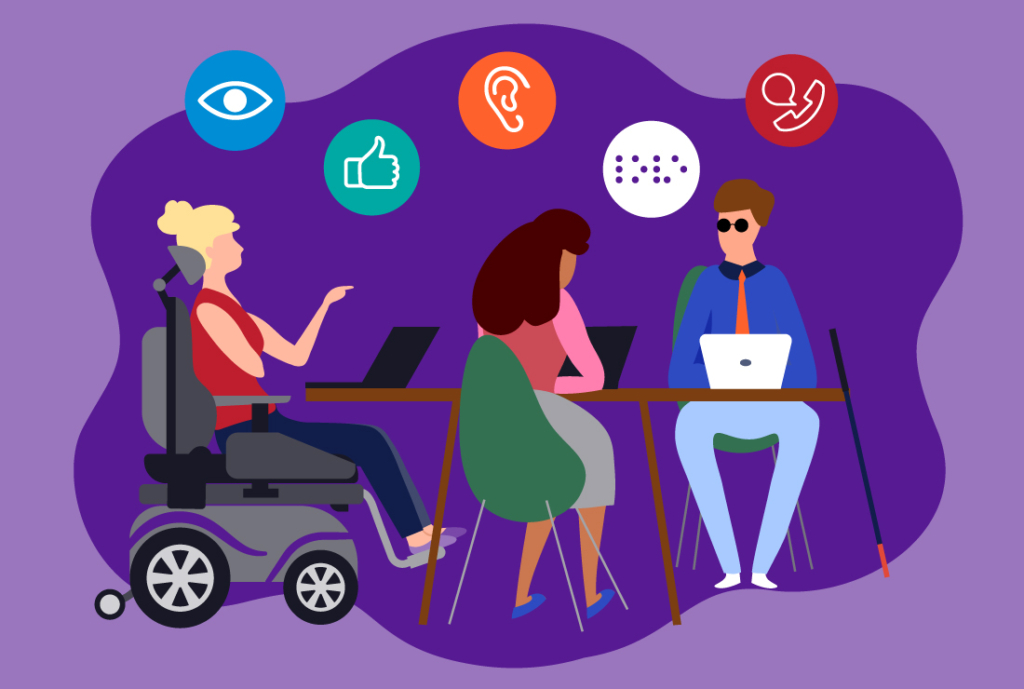
Global Accessibility Awareness Day (GAAD) aims to get people talking, thinking, and learning about digital access so that people with disabilities or impairments have fewer barriers to using the Internet.
What is digital accessibility?
Digital accessibility refers to the idea that any digital materials, such as websites, apps, videos, and audio, should be able to be accessed by all users, regardless of disabilities.
The World Wide Web Consortium (W3C) says, “The Web is fundamentally designed to work for all people, whatever their hardware, software, language, location, or ability. When the Web meets this goal, it is accessible to people with a diverse range of hearing, movement, sight, and cognitive ability.”
The need for digital accessibility
Why is digital accessibility important? It’s a complex topic that has no one-size-fits-all solution but at its core, accessibility is about removing barriers. This is no small feat considering the range of abilities that people have. Individuals may have health conditions or changing abilities that impact their need for accessibility features. People might be dealing with age-related impairments, multiple disabilities, or temporary disabilities. Disabilities can fall under auditory, cognitive, neurological, or physical categories. All individuals, regardless of their diverse abilities, should be able to access a website and all its content. Consider the following scenarios:
- A person is unable to use a mouse to click on a link.
- A person has visual impairments and can’t see the content on a page.
- A person has hearing impairments and can’t hear the content on a page.
- A person with a speech disability needs to contact the owners of a website but the only means of contact is a phone number.
With the CDC estimating that one in four adults in the United States has a disability, digital and web accessibility is important for many of our citizens. People rely on the Internet for countless vital tasks. This includes everything from online schooling and ordering groceries to filing taxes or accessing healthcare. The Internet can also be the major (or only) source of one’s entertainment, ability to shop, or means of communicating with friends and family.
Principles of digital accessibility
The Web Content Accessibility Guidelines (WCAG) has developed guidelines centered around four principles of accessibility. If a website element lacks any one of these principles, then it is considered inaccessible to users with disabilities:
- Perceivable: Information should be able to be perceived, no matter who is using the information and what senses they’re using. Sound and touch should be used for website visitors who can’t take visual clues. Examples include using text alternatives for non-text content, creating content that can be presented in multiple ways, and making it easier to see/hear content.
- Operable: Interactive elements shouldn’t require an interaction that is unavailable to a user or should otherwise provide an assistive device. Examples include providing adequate time to read content, not designing content that can cause physical reactions, and making functionality available via keyboard.
- Understandable: Users should be able to understand the meaning and intent of the information provided, as well as know how to interact with the interface. Examples include using understandable text, predictable page operation, and input assistance.
- Robust: Content should work across different technologies, including assistive devices.
Accessibility benefits everyone
Even if you (or your customers) don’t currently have a disability, there are still great reasons to employ and support digital accessibility. One major reason is that digital accessibility is, rightly so, considered an ethical practice. Ensuring equal access to everything the web has to offer is simply the right thing to do. And your company’s staff and customers will notice, too. Thanks in part to social media, a growing number of consumers (83% of millennials, according to one study) prefer to purchase from a company that shares their values. Supporting web accessibility is simply one more way to align your brand with your company values.
Another great reason? An accessible website is generally a better-performing website. Clear, concise content and visuals are appreciated by everyone, regardless of their abilities. (Plus, have you ever enlarged the text while on your phone? That functionality is made possible by accessibility!)
Make your site accessible
Today, take some time to browse GAAD’s website and learn more about digital accessibility. Taking those added steps to ensure your website is accessible could help a vast group of individuals become actively involved, while also attracting a larger audience. Does your website need some accessibility upgrades? We can help! Contact us today at 503.384.2413 or fill out our form.